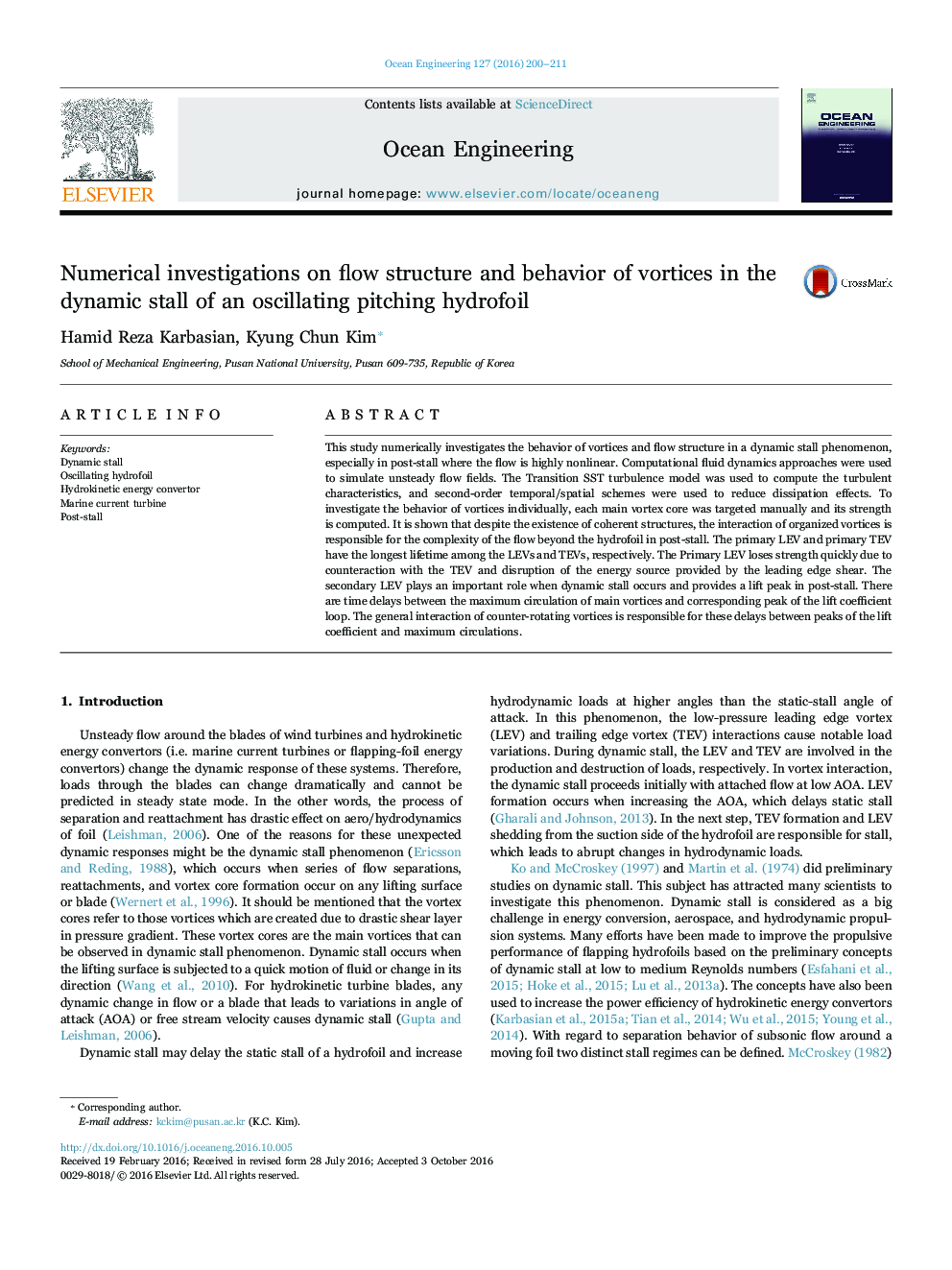| Article ID | Journal | Published Year | Pages | File Type |
|---|---|---|---|---|
| 5474503 | Ocean Engineering | 2016 | 12 Pages |
Abstract
This study numerically investigates the behavior of vortices and flow structure in a dynamic stall phenomenon, especially in post-stall where the flow is highly nonlinear. Computational fluid dynamics approaches were used to simulate unsteady flow fields. The Transition SST turbulence model was used to compute the turbulent characteristics, and second-order temporal/spatial schemes were used to reduce dissipation effects. To investigate the behavior of vortices individually, each main vortex core was targeted manually and its strength is computed. It is shown that despite the existence of coherent structures, the interaction of organized vortices is responsible for the complexity of the flow beyond the hydrofoil in post-stall. The primary LEV and primary TEV have the longest lifetime among the LEVs and TEVs, respectively. The Primary LEV loses strength quickly due to counteraction with the TEV and disruption of the energy source provided by the leading edge shear. The secondary LEV plays an important role when dynamic stall occurs and provides a lift peak in post-stall. There are time delays between the maximum circulation of main vortices and corresponding peak of the lift coefficient loop. The general interaction of counter-rotating vortices is responsible for these delays between peaks of the lift coefficient and maximum circulations.
Related Topics
Physical Sciences and Engineering
Engineering
Ocean Engineering
Authors
Hamid Reza Karbasian, Kyung Chun Kim,
